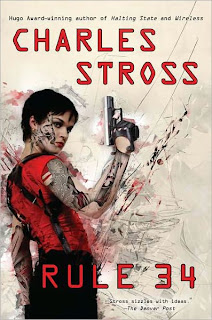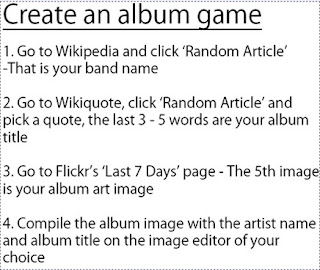Passionella and Other Stories
Those nine works aren't even the same kind of thing -- most of them are comics in Feiffer's usual style, with captions and dialogue loosely attached to drawings, without panel borders; but Passionella also includes playscripts (or essays in that format) and a more traditionally illustrated prose story. What they do all have in common is their Feiffer-ness: they're all stories of mid-century neurosis and perceived failure, about men with stomachs that hurt and women who are either unreadable Others or just as neurotic as the men (depending on whether they're protagonists or not).
First up, after a detailed introduction by Gary Groth, is "The Cutting Edgists," a short satire-of-satirists in the form of a dialogue among five satirists, all of whom are based closely on actual satirists from the time...and it's still somewhat cutting now, even though a modern audience has to be told which satirist is which (and who many of them were).
"Excalibur and Rose," an illustrated medieval tale in the fairy-tale mode, is next, and it has the typical duality of a fairy tale: he's always frivolous and happy, and seeks seriousness, while she has never known happiness, since she's always entirely serious. Unusually for Feiffer of the time, but as required by the form, they help each other find what they both need, in the end.
"The Lonely Machine" and "Harold Swerg" are more typical: each is a long narrative told in comics form about one man and his collisions with the wider world. Walter Fay is battered and defeated by the world, so he makes a machine that he can always dominate (in a very unsubtle metaphor for a marriage), which then leads him to confidence and success. Swerg, on the other hand, is already happy and content, but he's a potentially world-dominating athlete content to be a file clerk -- as usual with Feiffer, his characters can only be happy if they're already perfect, and don't change in the course of the story. "George's Moon," later in the book, is another variation on the "Lonely Machine" theme, with a young man living on the moon and concerned about both his depression and possible invaders.
One of Feiffer's main points throughout his career has been that every man, no matter how seemingly confident, is a mass of neuroses inside, and "Superman" is one of his clearest explications of that theme; it's another dialogue, in which just meeting a woman utterly demolishes the heroic career of the title character. "Crawling Arnold" is the most play-like of the playscripts here, and has been produced, though it's somewhat dated, both in its very '50s Freudian psychology and its doom-laden bunker setting.
And last is the title story, "Passionella," about a frumpy woman who wishes to be a beautiful, glamorous movie star, but has to deal with a insufficiently powerful "friendly neighborhood godmother." It has a tone not unlike "Excalibur and Rose," as if it's bringing a bit of the fairy tale into modern life, and Passionella has a happier ending than Superman, Arnold, Walter Fay, or any of the satirists do.
But Feiffer wasn't about happy endings -- he wasn't really about endings at all. His work, particularly in these early days, was more concerned with raising questions and poking into aspects of modern life that were more usually ignored by the glossy media of his day. These Feiffer stories don't have heroes, because heroes have to be perfect in ways that just don't exist. (Even Harold Swerg isn't Superman -- Feiffer implies that the only reason he can be that good is because he doesn't care about it.) What's left is ordinary men and women, gnawed by anxiety and unhappiness, lashing out at each other -- our world, in other words. Feiffer was one of the first to sketch the reality of modern life, and one of the best as well.




















